Wear Behavior of CuSn Coated Piston Ring Sliding against Nodular Cast Iron Cylinder Liner under Heavy-Duty Conditions
Abstract
1. Introduction
2. Experimental Details
2.1. Experimental Materials
2.2. Experimental Procedure
3. Results and Discussion
3.1. Comparision of Friction Force Variation Between the CuSn-Cr/Fe and Cr/Fe Pairs
3.2. Comparision of Friction Coefficient and Wear Loss between the CuSn-Cr and Cr Coated Piston Rings
3.3. Surface Roughness Analysis of the CuSn-Cr/Fe and Cr/Fe Pairs
3.4. Worn Surface Analysis of the Cylinder Liners Matched with the Cr and CuSn-Cr Coated Piston Rings
3.5. Worn Surface Analysis of the Cr and CuSn-Cr Coated Piston Rings
3.6. Wear Mechanism Discussion of the CuSn Coating
4. Conclusions
- The friction coefficient of CuSn-Cr/Fe pair was slightly lower than that of Cr/Fe pair. Wear loss of CuSn-Cr coated ring in the running-in process was higher than that of Cr coated ring, but CuSn coating consumption reduced the cylinder wear loss and provided a protection for the nodular cast iron cylinder liner.
- Based on the mean summit curvature comparison of nodular cast iron cylinder liner surface topography, the micro-asperities of cylinder liner matched with CuSn-Cr coated ring presented flatter than that of cylinder liner matched with Cr coated ring. The CuSn coating could be helpful to develop a flatter plateau structure of cylinder liner.
- The Sn patches worn from the CuSn-Cr coated piston ring was embedded into the cylinder liner surface under the heavy-duty load. It could be helpful to generate the tribo-chemical reaction film on the PRCL interface, improving the contact and friction condition among the PRCL micro-asperities.
Author Contributions
Funding
Conflicts of Interest
References
- Holmberg, K.; Andersson, P.; Nylund, N.; Makela, K.; Erdemir, A. Global energy consumption due to friction in trucks and buses. Tribol. Int. 2014, 78, 94–114. [Google Scholar] [CrossRef]
- Findik, F. Latest progress on tribological properties of industrial materials. Mater. Des. 2014, 57, 218–244. [Google Scholar] [CrossRef]
- Wong, V.W.; Tung, S. Overview of automotive engine friction and reduction trends–Effects of surface, material, and lubricant-additive technologies. Friction 2016, 4, 1–28. [Google Scholar] [CrossRef]
- Soltanahmadi, S.; Morina, A.; Van Eijk, M.C.P.; Nedelcu, I.; Neville, A. Experimental observation of zinc dialkyl dithiophosphate (ZDDP)-induced iron sulphide formation. Appl. Surf. Sci. 2017, 414, 41–51. [Google Scholar] [CrossRef]
- Gosvami, N.N.; Bares, J.A.; Mangolini, F.; Konicek, A.R.; Yablon, D.G.; Carpick, R.W. Mechanisms of antiwear tribofilm growth revealed in situ by single-asperity sliding contacts. Science 2015, 348, 102–106. [Google Scholar] [CrossRef]
- Spikes, H. The history and mechanisms of ZDDP. Tribol. Lett. 2004, 17, 469–489. [Google Scholar] [CrossRef]
- Shen, Y.; Lv, Y.; Li, B.; Huang, R.; Yu, B.; Wang, W.; Li, C.; Xu, J. Reciprocating electrolyte jet with prefabricated-mask machining micro-dimple arrays on cast iron cylinder liner. J. Mater. Process. Tech. 2019, 266, 329–338. [Google Scholar] [CrossRef]
- Saeidi, F.; Parlinska-Wojtan, M.; Hoffmann, P.; Wasmer, K. Effects of laser surface texturing on the wear and failure mechanism of grey cast iron reciprocating against steel under starved lubrication conditions. Wear 2017, 386–387, 29–38. [Google Scholar] [CrossRef]
- Matsumura, T.; Takahashi, S. Micro dimple milling on cylinder surfaces. J. Manuf. Process. 2012, 14, 135–140. [Google Scholar] [CrossRef]
- Zabala, B.; Igartua, A.; Fernandez, X.; Priestner, C.; Ofner, H.; Knaus, O.; Abramczuk, M.; Tribotte, P.; Girot, F.; Roman, E.; Nevshupa, R. Friction and wear of a piston ring/cylinder liner at the top dead centre: Experimental study and modelling. Tribol. Int. 2017, 106, 23–33. [Google Scholar] [CrossRef]
- Haque, T.; Morina, A.; Neville, A.; Arrowsmith, S. Tribochemical interactions of friction modifier and antiwear additives with CrN coating under boundary lubrication conditions. J. Tribol. Trans. ASME 2008, 130, 042302. [Google Scholar] [CrossRef]
- Mandrino, D.; Podgornik, B. XPS investigations of tribofilms formed on CrN coatings. Appl. Surf. Sci. 2017, 396, 554–559. [Google Scholar] [CrossRef]
- Lorenzomartin, C.; Ajayi, O.O.; Erdemir, A.; Fenske, G.R.; Wei, R. Effect of microstructure and thickness on the friction and wear behavior of CrN coatings. Wear 2013, 302, 963–971. [Google Scholar] [CrossRef]
- Podgornik, B.; Sedlacek, M.; Mandrino, D. Performance of CrN coatings under boundary lubrication. Tribol. Int. 2016, 96, 247–257. [Google Scholar] [CrossRef]
- Cho, D.; Lee, Y. Evaluation of ring surfaces with several coatings for friction, wear and scuffing life. Trans. Nonferrous Met. Soc. China 2009, 19, 992–996. [Google Scholar] [CrossRef]
- Lin, J.L.; Wei, R.H.; Bitsis, D.C.; Lee, P.M. Development and evaluation of low friction TiSiCN nanocomposite coatings for piston ring applications. Surf. Coat. Technol. 2016, 298, 121–131. [Google Scholar] [CrossRef]
- Shen, Y.; Yu, B.; Lv, Y.; Li, B. Comparison of heavy-duty scuffing behavior between chromium-based ceramic composite and nickel-chromium-molybdenum-coated ring sliding against cast iron liner under starvation. Materials 2017, 10, 1176. [Google Scholar] [CrossRef]
- Wan, S.H.; Li, D.S.; Zhang, G.A.; Tieu, A.K.; Zhang, B. Comparison of the scuffing behaviour and wear resistance of candidate engineered coatings for automotive piston rings. Tribol. Int. 2017, 106, 10–22. [Google Scholar] [CrossRef]
- Tas, M.O.; Banerji, A.; Lou, M.; Lukitsch, M.J.; Alpas, A.T. Roles of mirror-like surface finish and DLC coated piston rings on increasing scuffing resistance of cast iron cylinder liners. Wear 2017, 376–377, 1558–1569. [Google Scholar] [CrossRef]
- Forsberg, P.; Gustavsson, F.; Renman, V.; Hieke, A.; Jacobson, S. Performance of DLC coatings in heated commercial engine oils. Wear 2013, 304, 211–222. [Google Scholar] [CrossRef]
- Solis, J.; Zhao, H.; Wang, C.; Verduzco, J.A.; Bueno, A.S.; Neville, A. Tribological performance of an H-DLC coating prepared by PECVD. Appl. Surf. Sci. 2016, 383, 222–232. [Google Scholar] [CrossRef]
- Morita, T.; Andatsu, K.; Hirota, S.; Kumakiri, T.; Ikenaga, M.; Kagaya, C. Effect of hybrid surface treatment composed of plasma nitriding and DLC coating on friction coefficient and fatigue strength of stainless steel. Mater. Trans. 2013, 54, 732–737. [Google Scholar] [CrossRef]
- Hamilton, M.A.; Alvarez, L.A.; Mauntler, N.A.; Argibay, N.; Colbert, R.S.; Burris, D.L.; Muratore, C.; Voevodin, A.A.; Perry, S.S.; Sawyer, W.G. A possible link between macroscopic wear and temperature dependent friction behaviors of MoS2 coatings. Tribol. Lett. 2008, 32, 91–98. [Google Scholar] [CrossRef]
- Meng, F.; Chen, Y.; Yang, Y.; Chen, Z. Friction and wear behavior of electroless nick coating used for spindle of cotton picker. Ind. Lubr. Tribol. 2016, 68, 220–226. [Google Scholar] [CrossRef]
- He, Y.; Wang, S.C.; Walsh, F.C.; Chiu, Y.L.; Reed, P.A. Self-lubricating Ni-P-MoS2 composite coatings. Surf. Coat. Technol. 2016, 307, 926–934. [Google Scholar] [CrossRef]
- Mishra, D.; Sonia, F.J.; Srivastava, D.; Ganesha, G.N.; Singha, U.; Mukhopadhyay, A. Wear damage and effects of graphene-based lubricants/coatings during linear reciprocating sliding wear at high contact pressure. Wear 2018, 400–401, 144–155. [Google Scholar] [CrossRef]
- Meng, F.; Han, H.; Gao, X.; Yang, C.; Zheng, Z. Experiment study on tribological performances of GNPs/MoS2 coating. Tribol. Int. 2018, 118, 400–407. [Google Scholar] [CrossRef]
- Algul, H.; Tokur, M.; Ozcan, S.; Uysal, M.; Cetinkaya, T.; Akbulut, H.; Alp, A. The effect of graphene content and sliding speed on the wear mechanism of nickel–graphene nanocomposites. Appl. Surf. Sci. 2015, 359, 340–348. [Google Scholar] [CrossRef]
- Senthil Kumar, P.; Manisekar, K.; Subramanian, E.; Narayanasamy, R. Dry sliding friction and wear characteristics of Cu-Sn alloy containing molybdenum disulfide. Tribol. Trans. 2013, 56, 857–866. [Google Scholar] [CrossRef]
- Kato, H.; Takama, M.; Iwai, Y.; Washida, K.; Sasaki, Y. Wear and mechanical properties of sintered copper–tin composites containing graphite or molybdenum disulfide. Wear 2003, 255, 573–578. [Google Scholar] [CrossRef]
- Zhao, Y.; Zhang, Z.; Dang, H. Preparation of tin nanoparticles by solution dispersion. Mater. Sci. Eng. A 2003, 359, 405–407. [Google Scholar] [CrossRef]
- Toparli, M.; Celik, E.; Birlik, I.; Dokumaci, E.; Azem, N.F.A. Tribological properties of electric arc–sprayed CuSn coating for bearing elements. Tribol. Trans. 2009, 52, 389–394. [Google Scholar] [CrossRef]
- Silva, P.S.D.; Senna, L.F.D.; Lago, D.C.B.D. Cu-Sn coatings produced using environmentally non-aggressive electrolyte containing sodium tartrate. Mater. Res. Ibero-am. J. Mater. 2017, 20, 667–675. [Google Scholar] [CrossRef]
- Asnavandi, M.; Ghorbani, M.; Kahram, M. Production of Cu–Sn–graphite–SiC composite coatings by electrodeposition. Surf. Coat. Technol. 2013, 216, 207–214. [Google Scholar] [CrossRef]
- Wu, L.; Graves, J.E.; Cobley, A.J. Mechanism for the development of Sn-Cu alloy coatings produced by pulsed current electrodeposition. Mater. Lett. 2018, 217, 120–123. [Google Scholar] [CrossRef]
- Subramanian, B.; Mohan, S.; Jayakrishnan, S. Structural, microstructural and corrosion properties of brush plated copper-tin alloy coatings. Surf. Coat. Technol. 2006, 201, 1145–1151. [Google Scholar] [CrossRef]
- Han, C.; Liu, Q.; Ivey, D.G. Nucleation of Sn and Sn-Cu alloys on Pt during electrodeposition from Sn-citrate and Sn-Cu-citrate solutions. Electrochim. Acta 2009, 54, 3419–3427. [Google Scholar] [CrossRef]
- Zanella, C.; Xing, S.; Deflorian, F. Effect of electrodeposition parameters on chemical and morphological characteristics of Cu-Sn coatings from a methanesulfonic acid electrolyte. Surf. Coat. Technol. 2013, 236, 394–399. [Google Scholar] [CrossRef]
- Shen, Y.; Jin, M.; Liu, Y.; Zhu, F. Characterization of friction condition transition by phase space trajectories. J. Tribol. Trans. ASME 2017, 139, 034501. [Google Scholar] [CrossRef]
- Huang, N.E.; Shen, Z.; Long, S.R. The empirical mode decomposition and the Hilbert spectrum for nonlinear and non-stationary time series analysis. P. Roy. Soc. A Math. Phy. 1998, 454, 903–995. [Google Scholar] [CrossRef]
- Guo, K.; Zhang, X.; Li, H.; Meng, G. Application of EMD method to friction signal processing. Mech. Syst. Signal Pr. 2008, 22, 248–259. [Google Scholar] [CrossRef]
- Zhu, F.; Xu, J.; Han, X.; Shen, Y.; Jin, M. Deposit formation on chromium-plated cylinder liner in a fully formulated oil. Proc. Inst. Mech. Eng. Part J J. Eng. Tribol. 2016, 230, 1415–1422. [Google Scholar] [CrossRef]
- Dimkovski, Z.; Anderberg, C.; Ohlsson, R.; Rosén, B.-G. Characterisation of worn cylinder liner surfaces by segmentation of honing and wear scratches. Wear 2011, 271, 548–552. [Google Scholar] [CrossRef]
- Prajapati, D.K.; Tiwari, M. Topography analysis of random anisotropic gaussian rough surfaces. J. Tribol. Trans. ASME 2017, 139, 041402. [Google Scholar] [CrossRef]
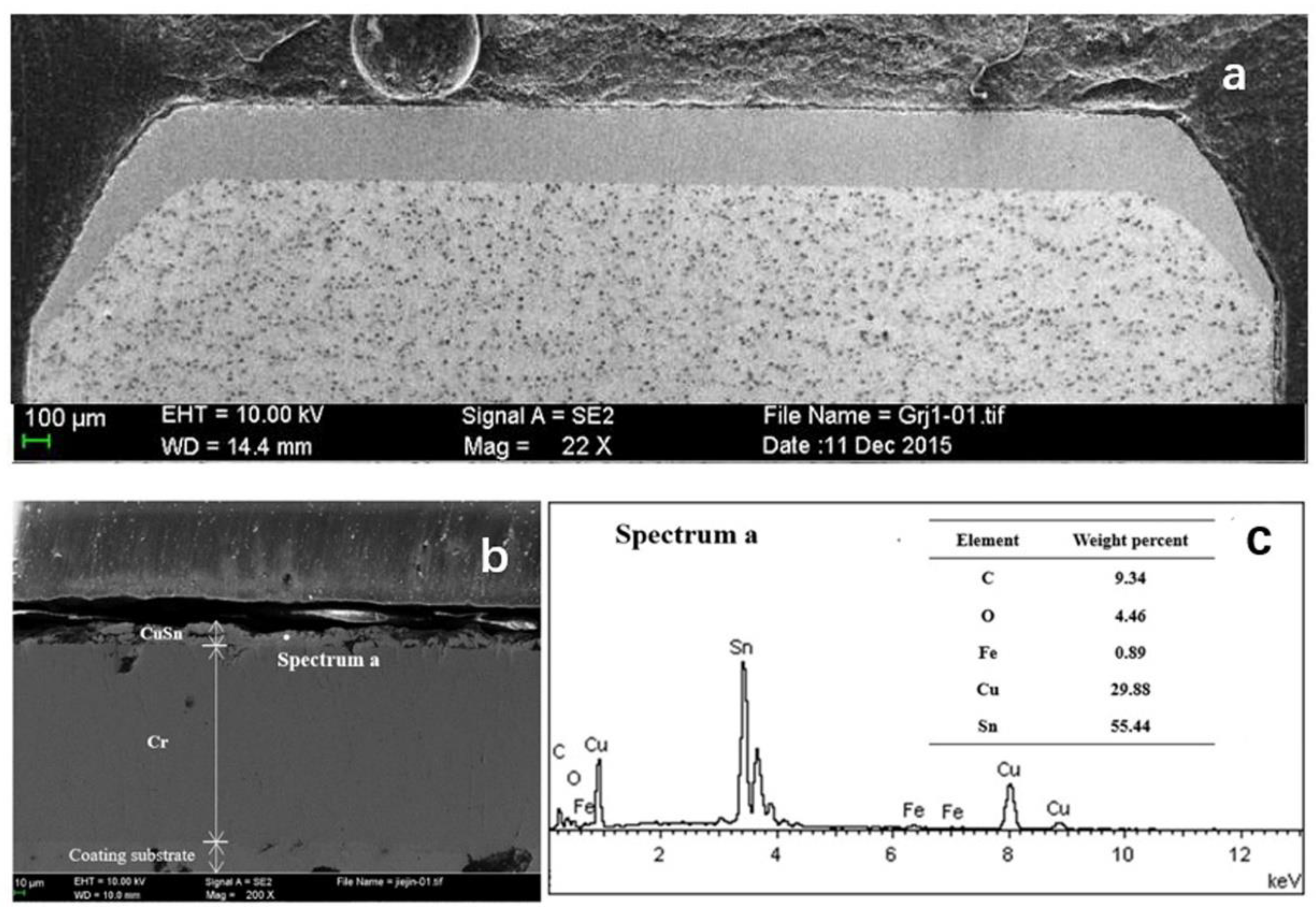
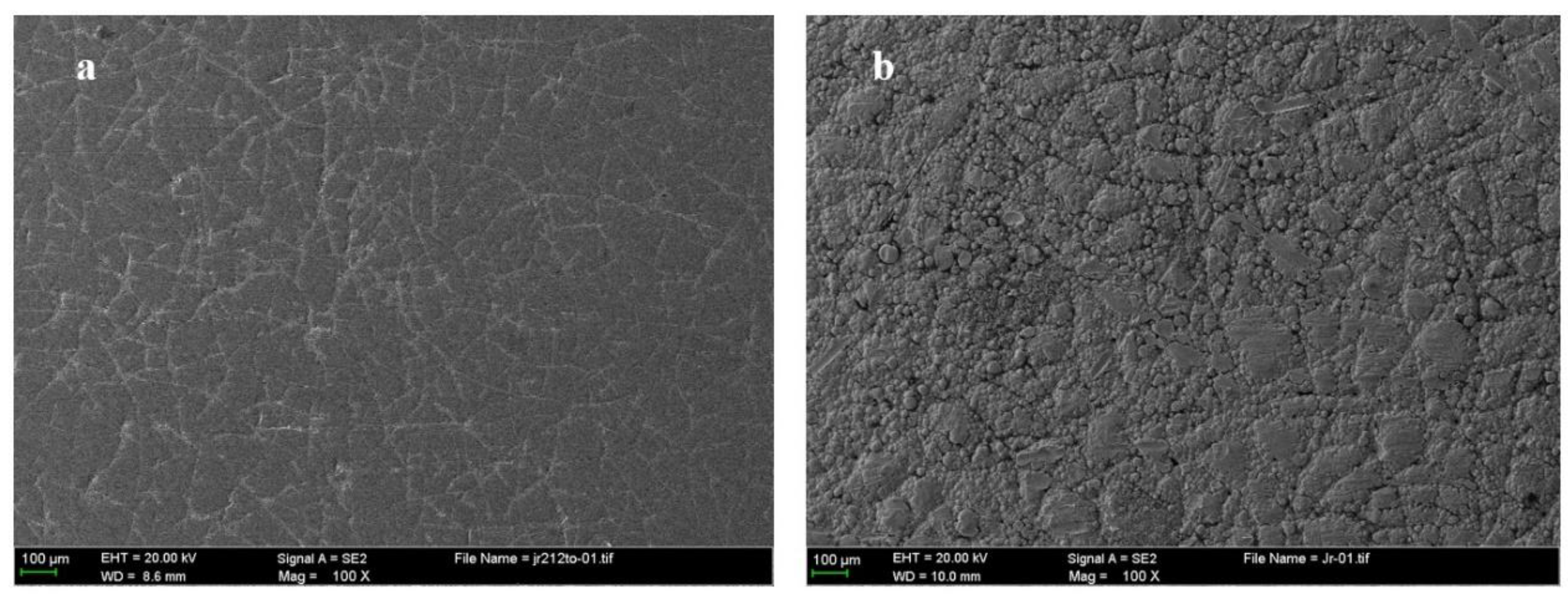
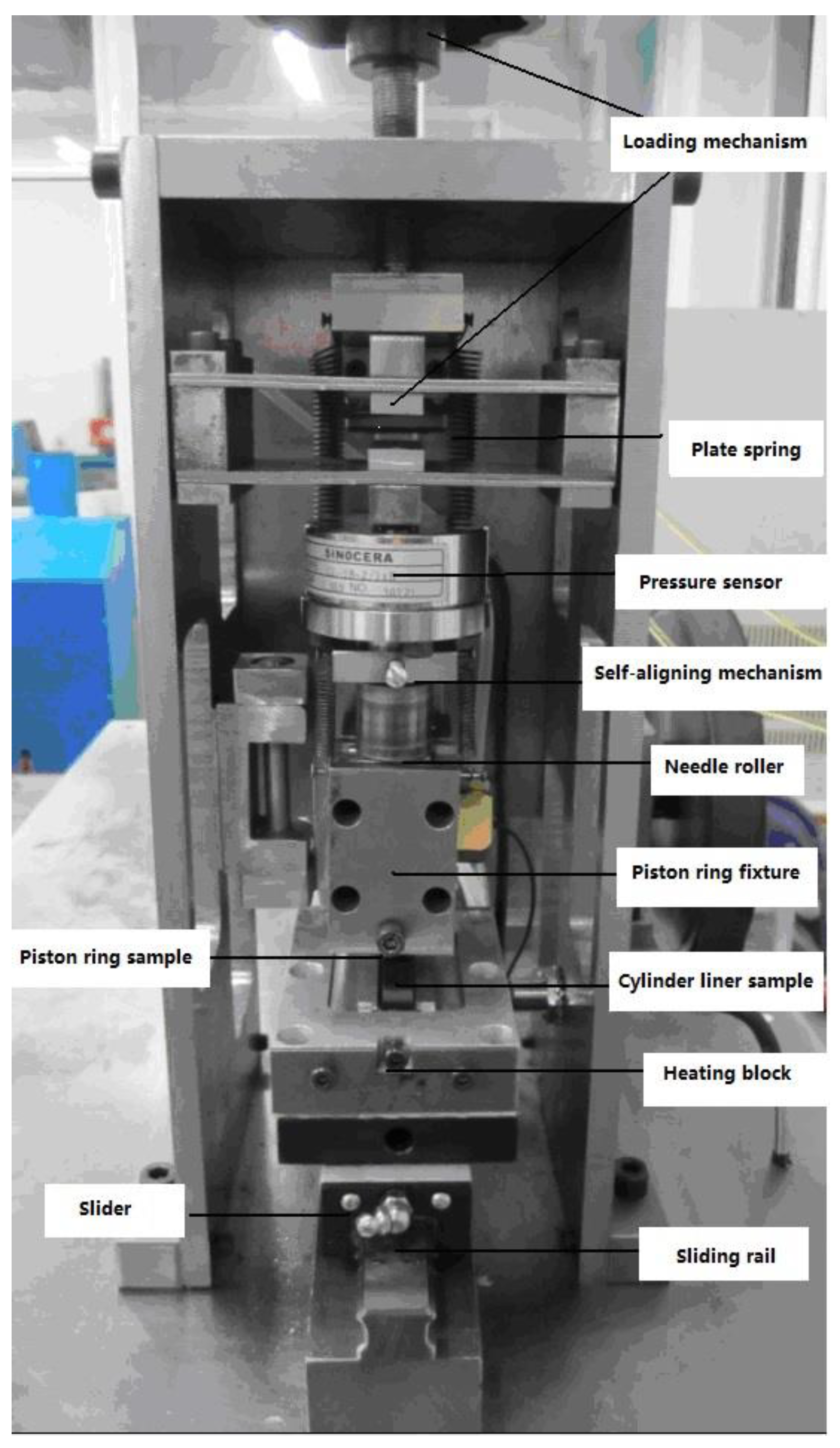
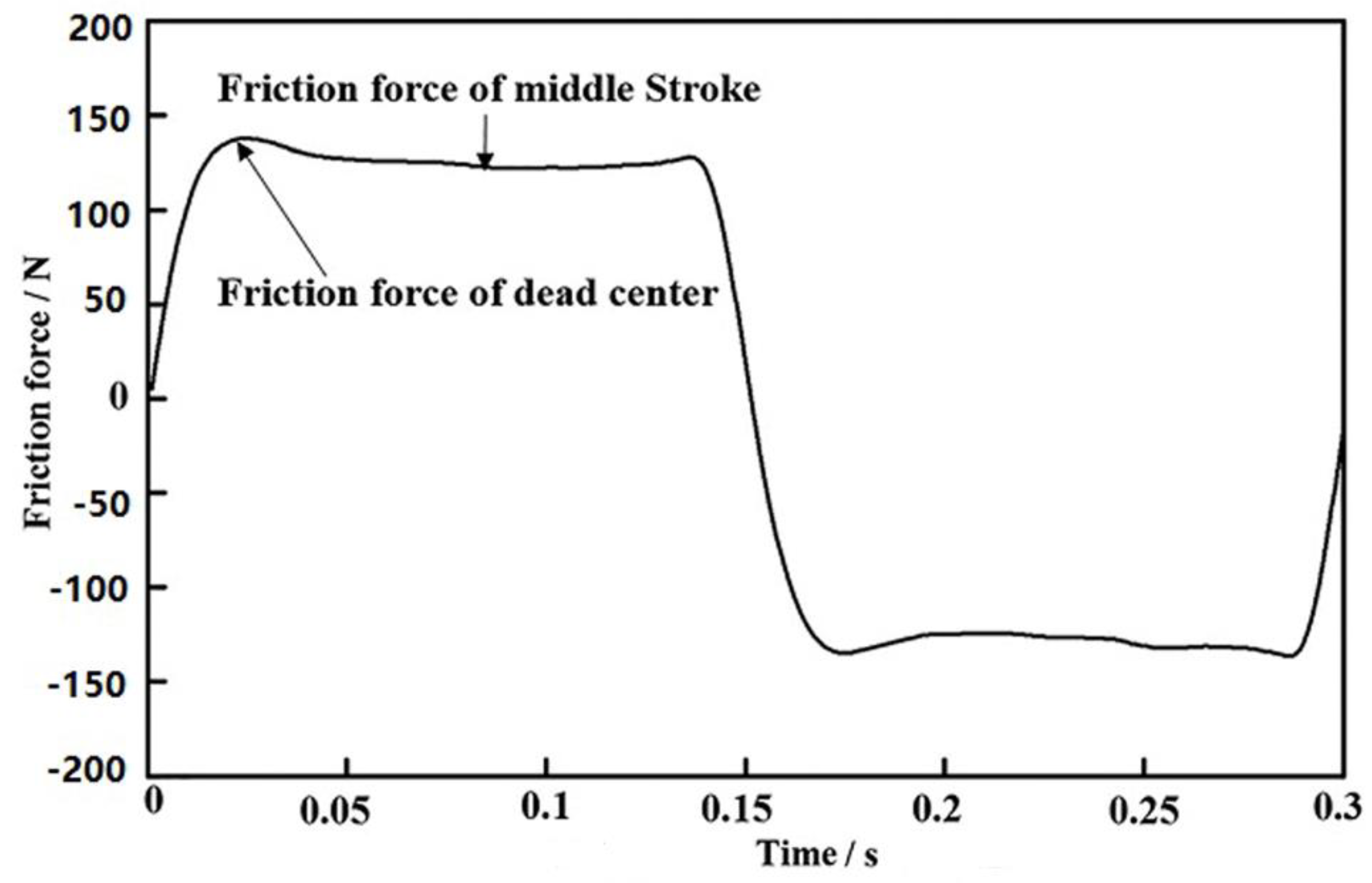
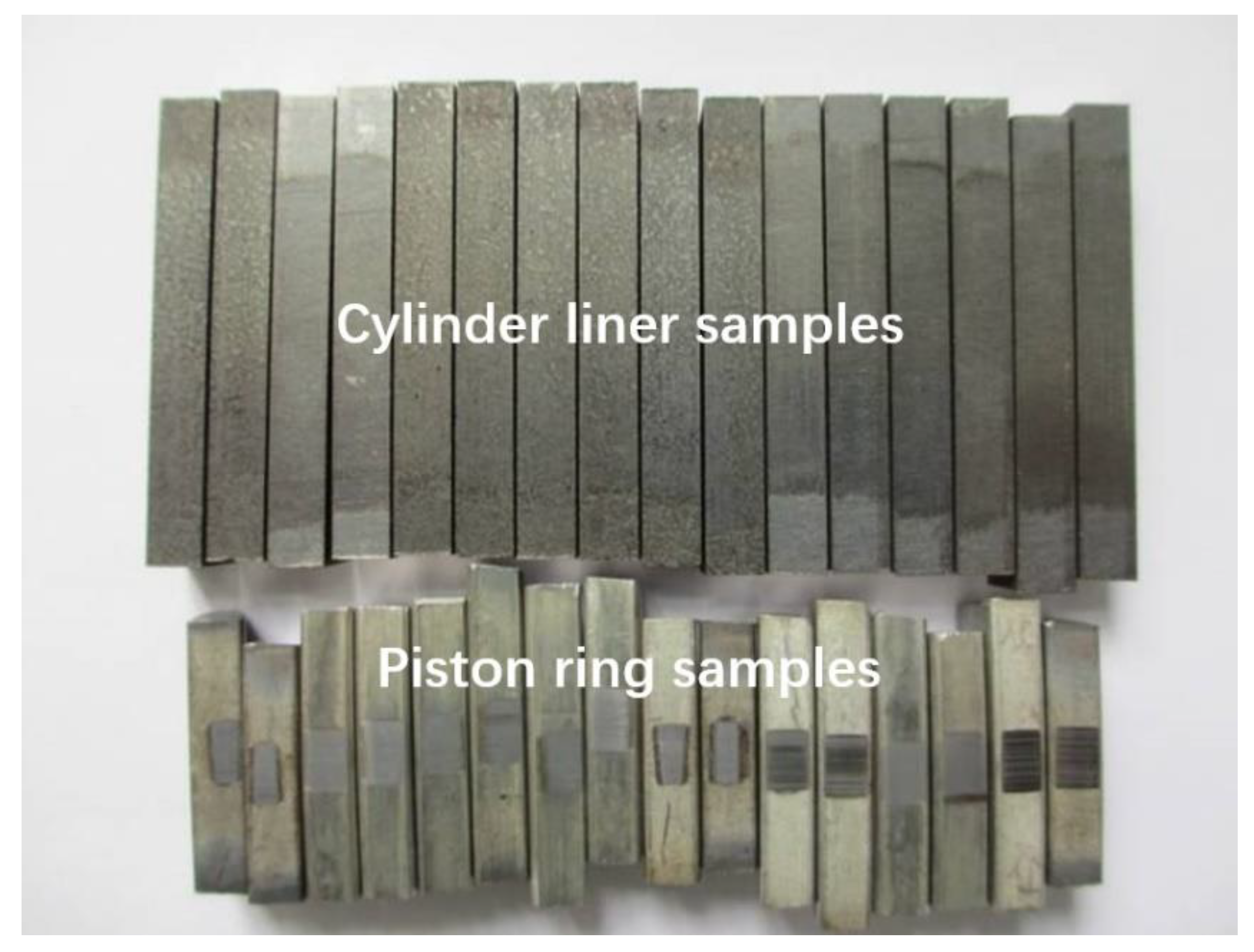
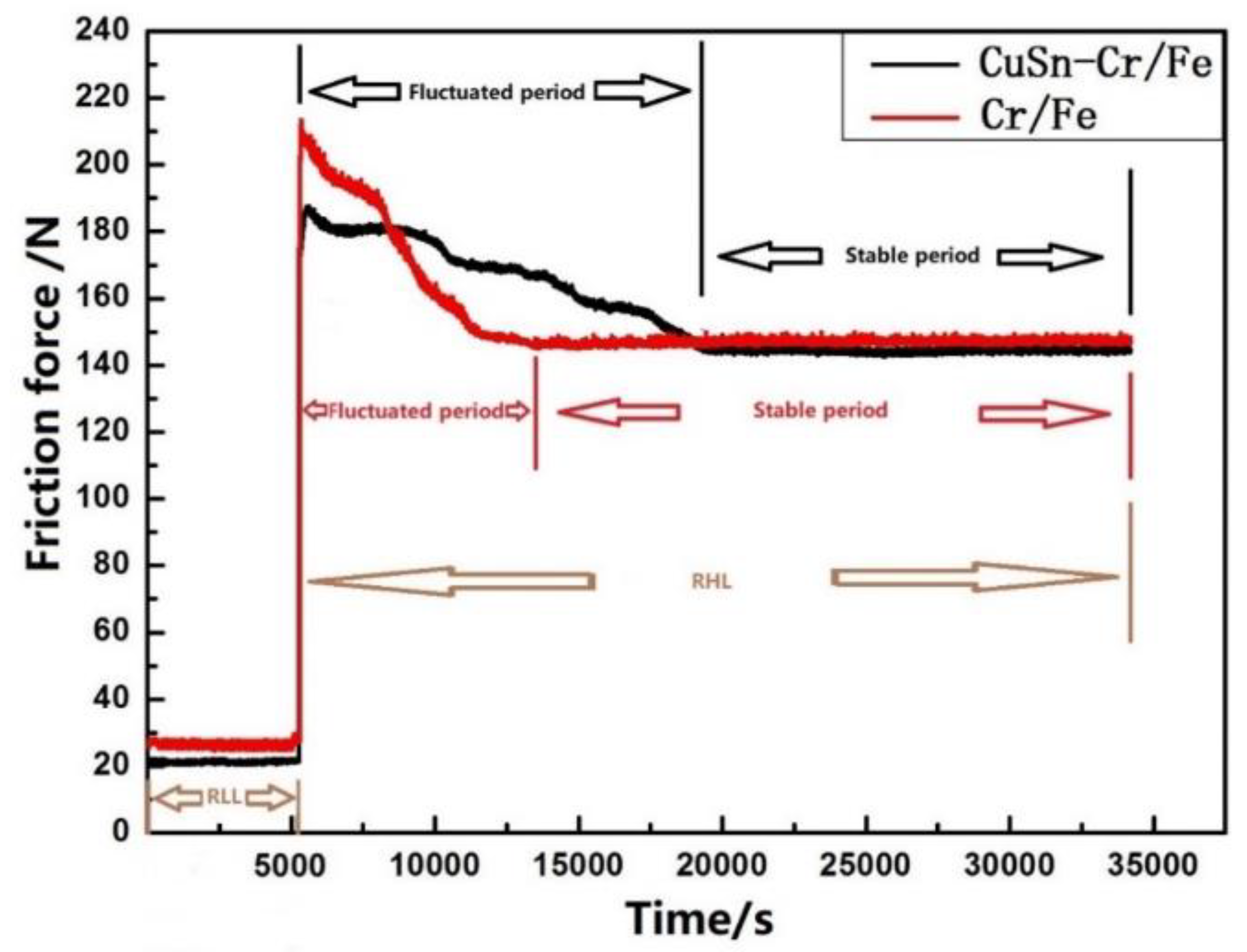
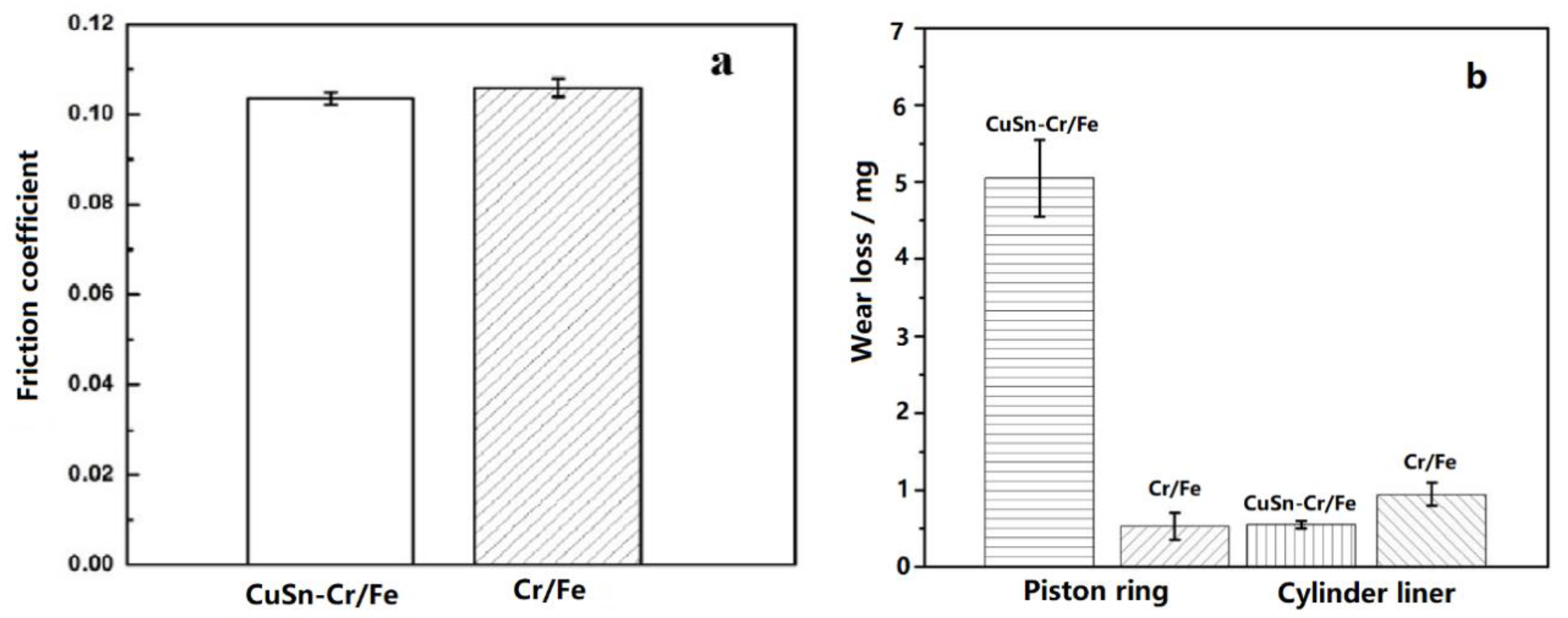
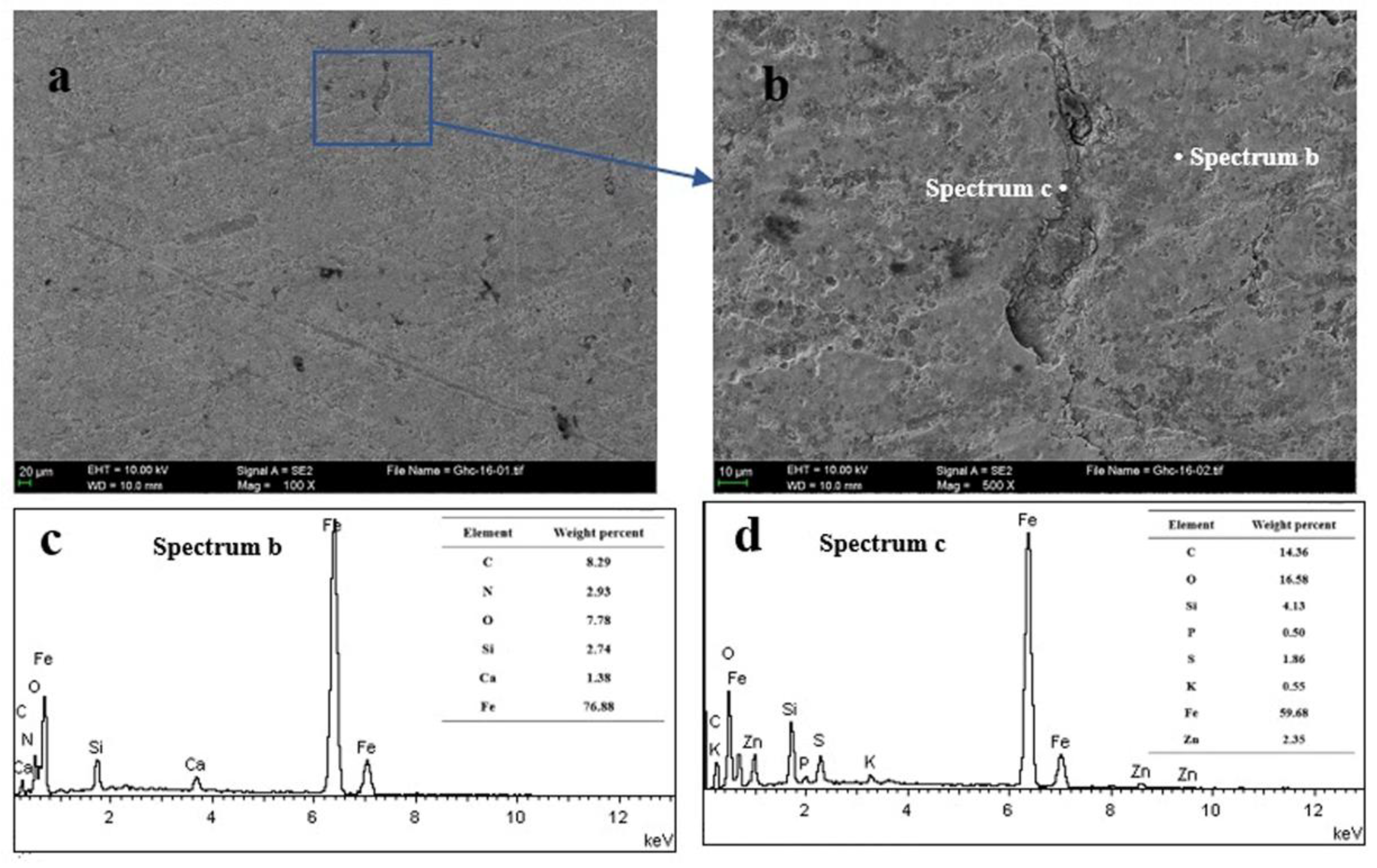
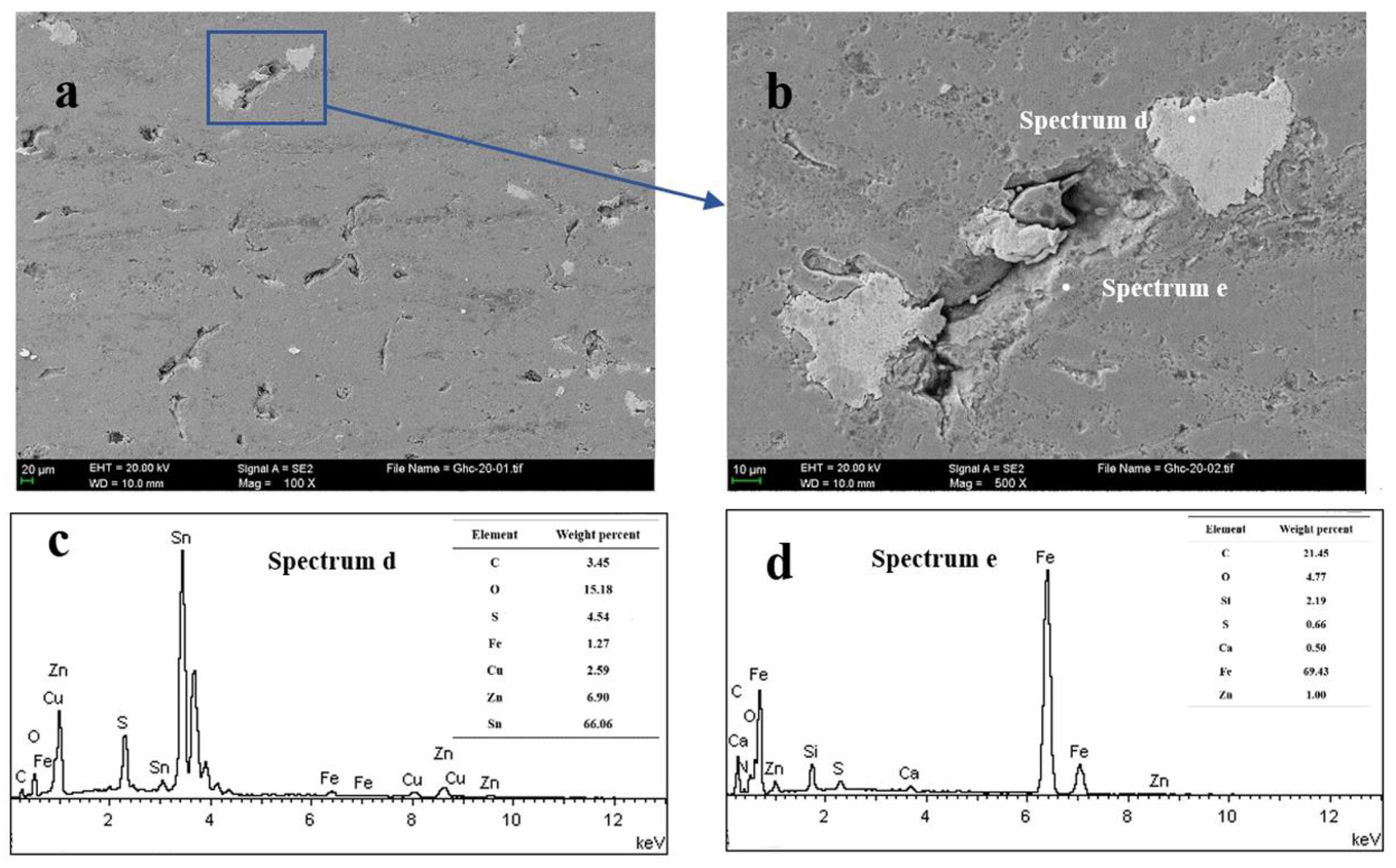
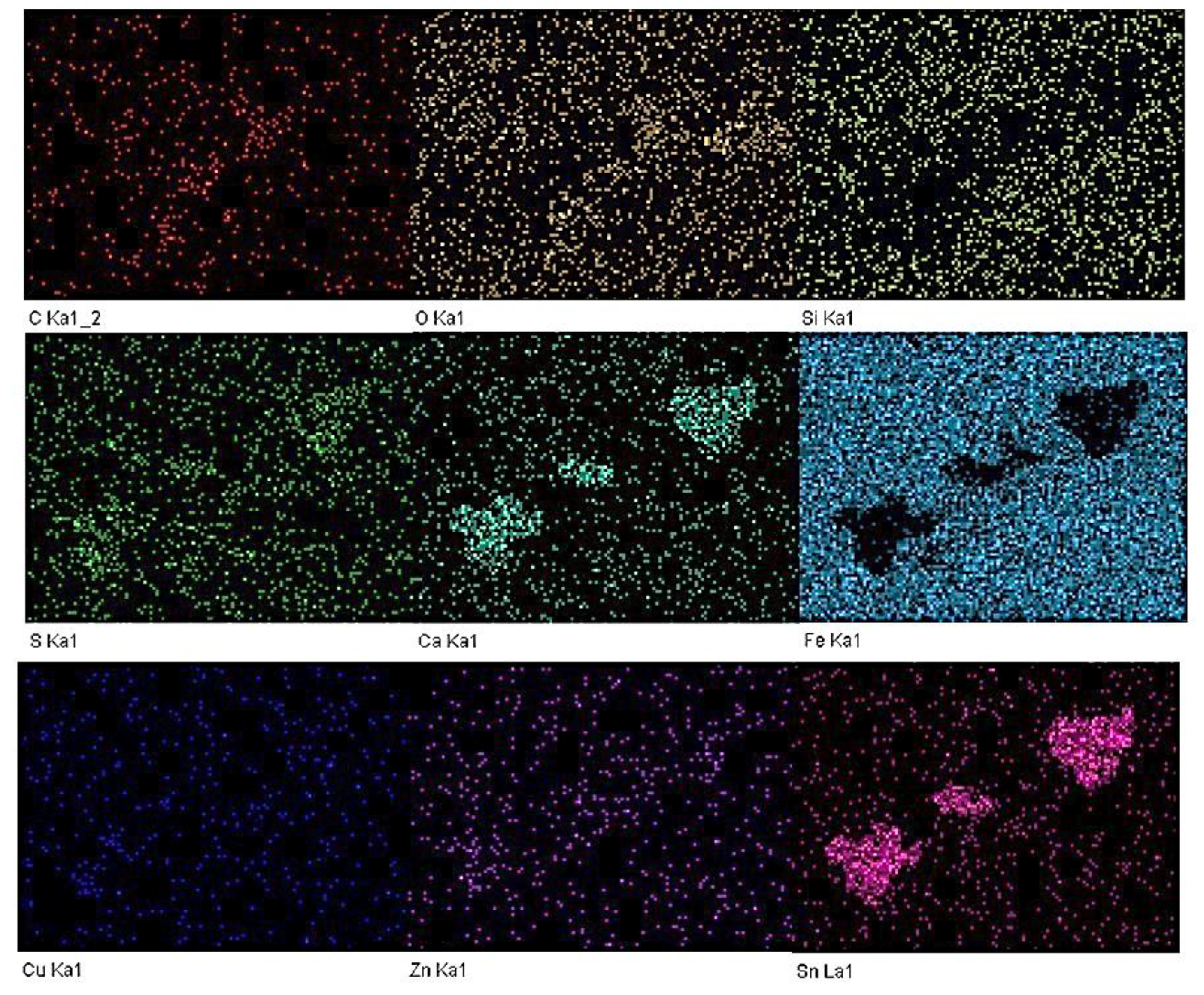
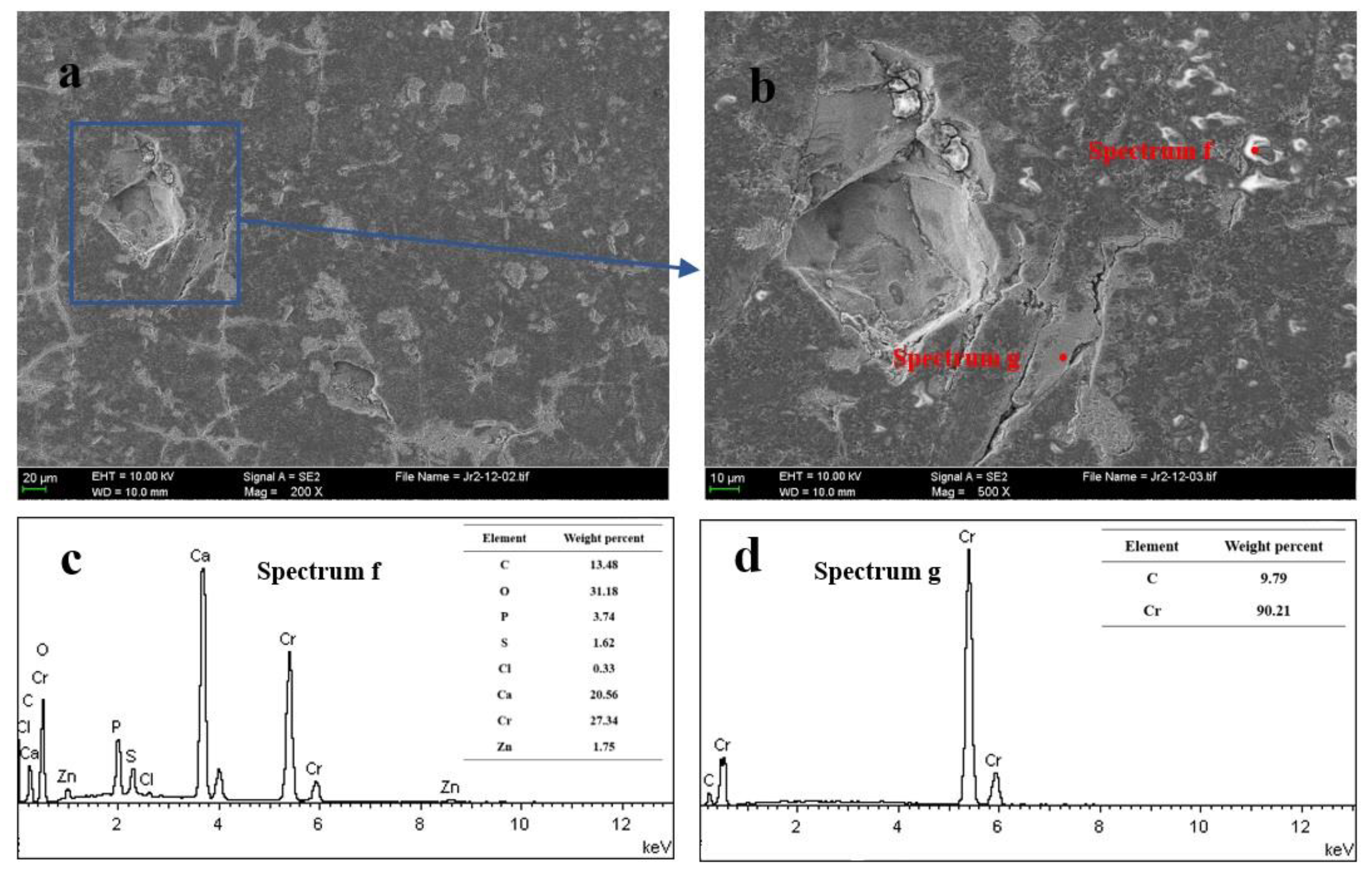

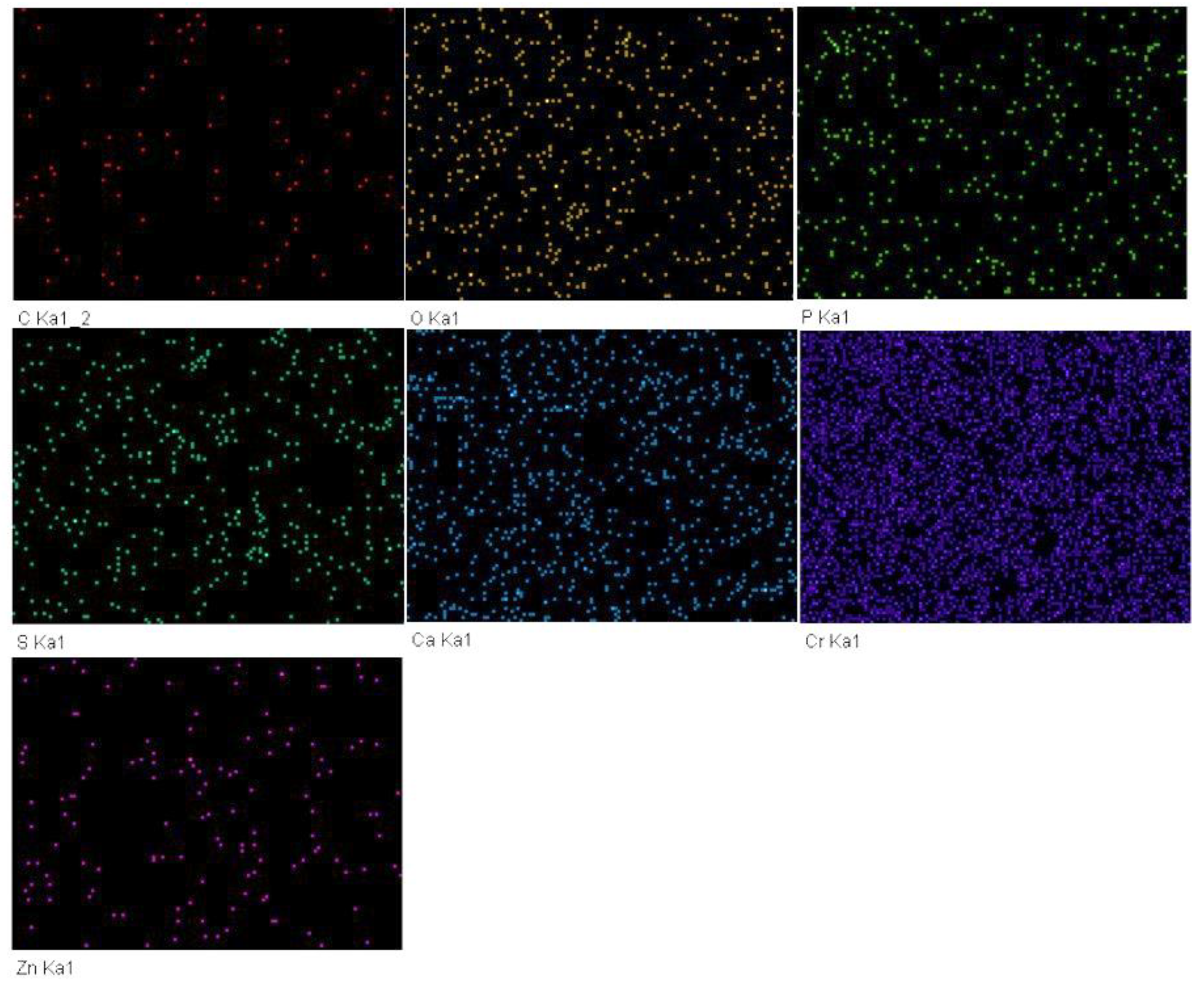
| Experimental Stage | Nominal Pressure (MPa) | Temperature (°C) | Time (h) |
|---|---|---|---|
| RLL | 7 | 120 | ~1.5 |
| RHL | 56 | 190 | ~8 |
| Frictional Pairs | Surface Roughness before Running-in Test (μm) | Surface Roughness after Running-in Test (μm) |
|---|---|---|
| Cr/Fe | 0.25/1.07 | 0.20/0.35 |
| CuSn-Cr/Fe | 13.67/1.09 | 0.16/0.28 |
© 2019 by the authors. Licensee MDPI, Basel, Switzerland. This article is an open access article distributed under the terms and conditions of the Creative Commons Attribution (CC BY) license (http://creativecommons.org/licenses/by/4.0/).
Share and Cite
Li, W.; Yu, B.; Lv, Y.; Shen, Y.; Huang, R.; Du, F. Wear Behavior of CuSn Coated Piston Ring Sliding against Nodular Cast Iron Cylinder Liner under Heavy-Duty Conditions. Metals 2019, 9, 139. https://doi.org/10.3390/met9020139
Li W, Yu B, Lv Y, Shen Y, Huang R, Du F. Wear Behavior of CuSn Coated Piston Ring Sliding against Nodular Cast Iron Cylinder Liner under Heavy-Duty Conditions. Metals. 2019; 9(2):139. https://doi.org/10.3390/met9020139
Chicago/Turabian StyleLi, Wenhua, Baihong Yu, Yutao Lv, Yan Shen, Ruoxuan Huang, and Fengming Du. 2019. "Wear Behavior of CuSn Coated Piston Ring Sliding against Nodular Cast Iron Cylinder Liner under Heavy-Duty Conditions" Metals 9, no. 2: 139. https://doi.org/10.3390/met9020139
APA StyleLi, W., Yu, B., Lv, Y., Shen, Y., Huang, R., & Du, F. (2019). Wear Behavior of CuSn Coated Piston Ring Sliding against Nodular Cast Iron Cylinder Liner under Heavy-Duty Conditions. Metals, 9(2), 139. https://doi.org/10.3390/met9020139





